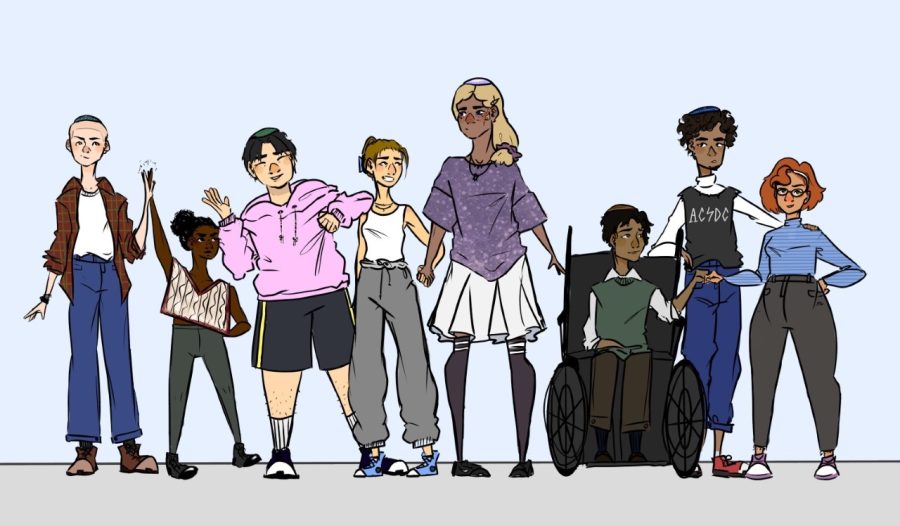New attire guidelines implemented
One of two photos used to represent appropriate school attire.
September 15, 2022
This year, CESJDS implemented new attire guidelines, modifying the rules from the prior dress code.
These new guidelines give students a newfound freedom because they emphasize students’ ability to decide what they think is appropriate and what is not.
High School Principal Lisa Vardi led the dress code committee, which was made up of students and faculty.
“The idea came from two places,” Vardi said. “The last school I was at we had a uniform and dress code constantly came up even when with a uniform … and it also came from the fact that three female students in last year’s graduating class shared they believed our dress code enforcement policy was biased towards females.”
An important aspect of these new guidelines is that they were compiled by students and teachers alike. Sophomore Abby Chesman was involved in the process from the very beginning.
“The committee met for the first time to discuss concerns we had with the current dress code,” Chesman said. “After we outlined our concerns, we talked about how to best address them. We crafted a survey to send out to our community so that we could hear from everybody about their individual concerns and observe which patterns we saw so that they could be addressed.”
Many students noticed that at the end of last year, the dress code was not enforced. This was a decision made by the dress code committee to see how it would go and make adjustments according to that.
Some changes in the new guidelines include modified rules on sleeveless tops. Students are now able to wear sleeveless shirts like basketball jerseys or thick strapped tank tops. There is also more flexibility when it comes to the length of students’ shorts.
The guidelines are illustrated rather than spelled out in writing for students. Two students created the illustrations on which the guidelines are based: junior Taylor Polonsky and freshman Leah Fagin. These illustrations were displayed and discussed at grade-level meetings during the first week of school.
“I don’t really think I’m in the position to know what’s right with enforcement, but I do like how the committee has put an emphasis on avoiding negative reinforcement when it comes to the clothing we wear,” Polonsky said. “Though I know some people have expressed they’d have an easier time with more clear-cut rules, I think it’s good the school is experimenting with different ways of enforcement and guidelines.”
Another big change to the attire policy is that teachers are no longer dress-coding students directly. Instead, teachers use a Google form to inform the administration of the questionable attire, and the administration will email students and their parents.
Students have mixed opinions about the new dress code.
“I think everyone at school is happy to see the effort being made towards a new dress code, but that doesn’t mean it’s perfect,” sophomore Dalia Epstein said. Epstein thinks the dress code could be improved if teachers were given more specific guidelines of what is and isn’t allowed.
Vardi said that she is already starting to see an impact based on the guidelines.
“Thus far, we have seen a change in student school attire based on the emails and follow-up conversations,” Vardi said.








